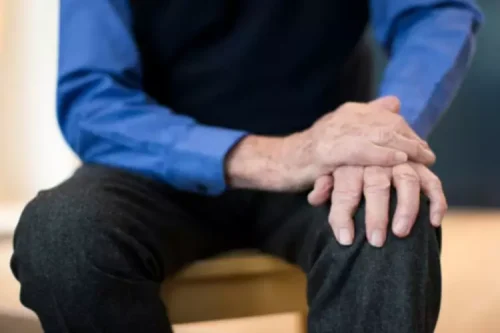
Check out this article to learn more about how therapy can support you during withdrawal. It may focus on managing your withdrawal symptoms or addressing physical and mental dependence. Opiates, also known as opioid painkillers, include prescription drugs such as hydrocodone, fentanyl, and morphine. These substances are effective pain relievers when taken as directed by a physician.
What oxycodone does to your brain and body

These drugs can be part of a person’s therapy for opioid use disorder. They are therapeutic treatments, not substitutes for the drugs causing the person’s problem. Patients who are highly motivated and have good social support tend to do better with the support of these medications. There is an increased number of people misusing prescription pain medications and moving on to other drugs such as fentanyl or heroin.
Geographic Variations in Overdose Rates
- Recent opioid epidemic updates focus on the failure of regulation and concerns that the pharmaceutical industry is too heavily motivated by profit.
- One side effect of opioids is respiratory depression, which can be fatal.
- Naloxone (commonly known by the brand name Narcan®) is a drug that treats the overdose immediately.
It’s important to recognize what you can do to help address the opioid epidemic. An individual may behave in certain ways or experience certain behavioral symptoms. These symptoms can include taking more than the prescribed dose of opioid medication. If a person then runs out of their prescription, they may take other opioid medications instead.

About Mayo Clinic
Short-acting opioids are those with rapid effects that have to be taken multiple times a day. They’re commonly used for short-term pain management or breakthrough pain signs of opioid addiction in chronic conditions. Opioids include opiates, drugs made from natural opium, and synthetic or semi-synthetic substances made to replicate the effects of opiates.
Emergency responses to opioid overdose
- A rise in the prevalence of OUD and opioid deaths lends to the importance of clinicians’ appreciation for the complexity of OUD.
- Instead, they negotiated a separate deal with Purdue and plaintiffs in pending lawsuits that would allow the company to reinvent itself to address the opioid crisis.
- Download, read, and order free NIMH brochures and fact sheets about mental disorders and related topics.
- Many healthcare professionals and organizations encourage people to carry intranasal naloxone, especially if they live with or are frequently around someone who uses opioids.
- While physicians and advanced practice providers may make the formal diagnosis of OUD, nurses and pharmacists may be the first to notice opioid misuse.
Others may have fallen into a pattern of drug use and decided to experiment with synthetic opioids, unaware of how addictive they can be. The first wave of the opioid crisis was in the late 1990s and early 2000s, when prescription opioids were relatively common. Various treatment options are available, including visiting opioid specialists and taking drugs designed to help people with addiction. A patient’s primary care doctor — or the doctor who prescribed the opioid — can help assess the situation and recommend options.
How to tell if a loved one is abusing opioids
The risk of addiction and how fast you become addicted varies by drug. Some drugs, such as opioid painkillers, have a higher risk and cause addiction more quickly than others. Several drugs are available that can help people discontinue opioid use by reducing cravings or blocking the pleasant feelings that opioids cause.
Using multiple substances also adds complexity to withdrawal, as does your overall health and individual physical characteristics. If you suspect that you or someone you care about has a heroin addiction, talk with a professional. This can include a mental health professional like a licensed drug or alcohol counselor or a social worker, physician, or psychiatrist. An inpatient facility combines physical and mental healthcare away from your home environment. After you undergo a detox, you engage in individual and group therapy to address the root cause of your addiction to oxycodone. During detox, some medications may be used to ease withdrawal symptoms.

What are opioids?
All DEA-registered practitioners with Schedule III prescribing authority may now prescribe buprenorphine for OUD in their practice if permitted by applicable state law. Prescribers previously registered with a DATA Waiver will receive a new DEA registration certificate reflecting this change without further action. Additionally, there are no longer limits on the number of patients with OUD that a practitioner may treat with buprenorphine or tracking of patients treated with buprenorphine required.
- These reports and detailed tables present national estimates from the 2023 National Survey on Drug Use and Health (NSDUH).
- Bicycle Health, based in Boston, offers medication for addiction treatment, access to medical experts, therapy and peer support groups.
- Treatment for opioid use disorder has evolved significantly in response to the current opioid epidemic, which means many treatment options are available to minimize withdrawal and help you sustain long-term recovery.
- In addition, a medication called clonidine can be used during withdrawal to help reduce anxiety, agitation, muscle aches, sweating, runny nose, and cramping.
- Individuals respond differently, but these medications can safely be taken for years.
To help identify whether someone is battling a painkiller abuse problem, there are several physical and behavioral warning signs to watch out for. Recognizing the telltale signs of opiate addiction can be a challenge. Learn how to identify and treat an addiction to these types of prescription drugs. Stay safe by knowing about the potential side effects of prescription opioids and how they can be properly https://ecosoberhouse.com/ used to manage pain. If you or a loved one is considering taking opioids to manage pain, it is vital to talk to an anesthesiologist or other pain medicine specialist about using them safely and exploring alternative options if needed. Learn how to work with your anesthesiologist or another physician to use opioids more wisely and safely and explore what pain management alternatives might work for you.
